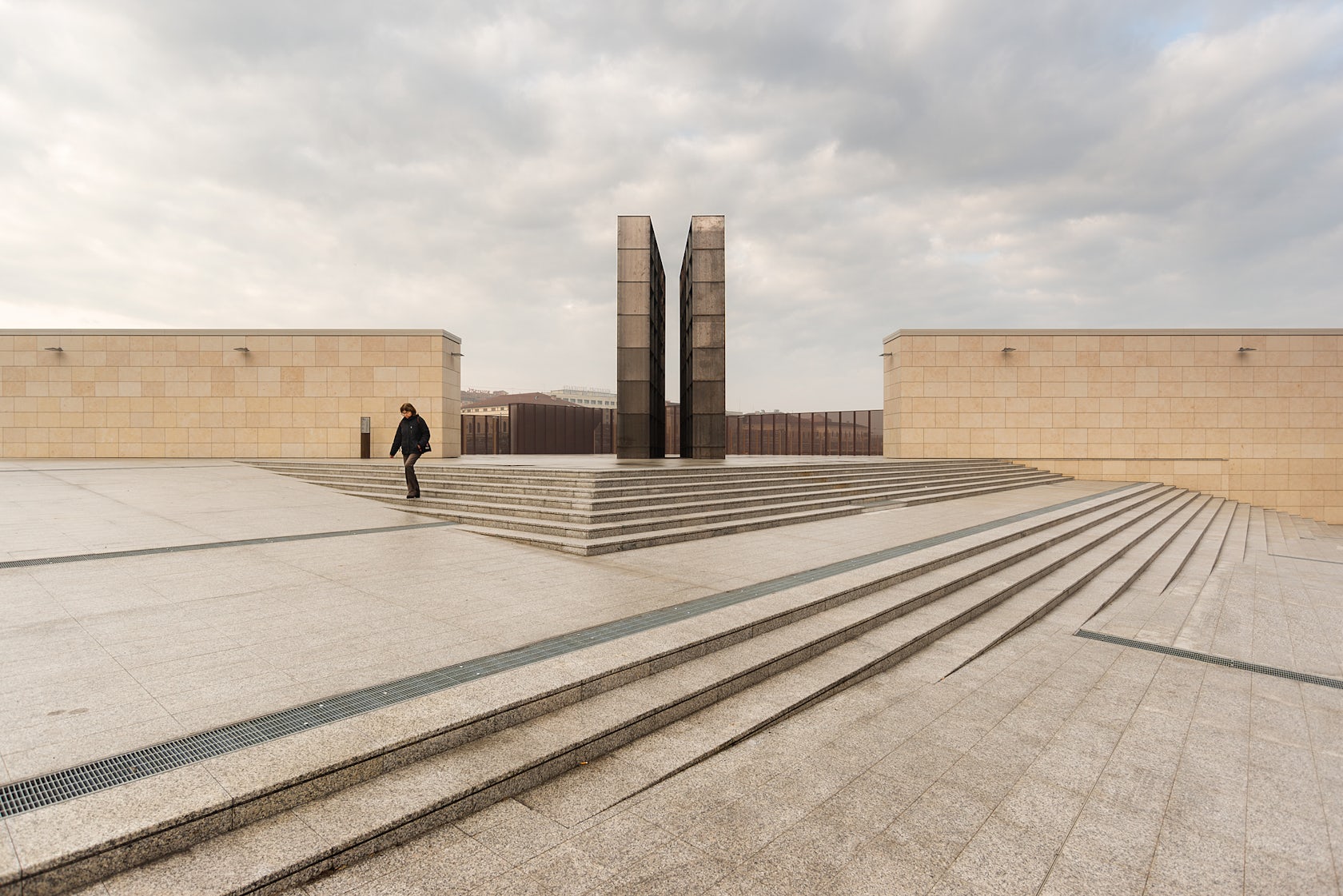Call for entries: The 14th Architizer A+Awards celebrates architecture's new era of craft. Apply for publication online and in print by submitting your projects before the Main Entry Deadline on December 12th!
With the advent of modern architecture and its commitment to material and formal honesty came the prominence of the minimalist memorial — designs of commemoration that favored the absorbent meaning of abstract forms to the prescriptive qualities of literal sculptures. After Maya Lin sliced the ground on the National Mall to create the black granite wound of the Vietnam War Memorial, and Peter Eisenman raised disorienting stelae out of Berlin’s fraught urban space to form the Monument to the Murdered Jews of Europe, many recent memorial designs have taken similarly understated routes, suggesting in a combination of both allusive and unspecific forms the shapeshifting nature of collective memory.
The memorials in this collection, apart from their shared tendency towards minimalism, are by no means equivalent. But whether it is trauma or reverence, individual tragedy or mass conflict, the impetus behind commemoration is often rooted in a desire to pinpoint the collective memory in a shared physical experience, a space of reflection designed to hold the heaviness of history. Sometimes memorials, like the histories they embody, are controversial in their messages, audience and design. But in these moments, public repositories tend to work best when rendered abstract, allowing flecks of individual remembrance to color in their volumetric outlines.



WWII Execution Memorial by Skoutelis N. & Zanon F, Damasta, Greece
Located on a hilltop in rural Greece, this simple memorial design provides a small-scale space of contemplation, its triangular footprint hosting a bench and viewing platform. Stairs lead up to a tapered, monumental wall that seeks to convey the tragedy of war in material alone.

© VDLA

© VDLA

© VDLA
Hariri Memorial Gardenby VDLA, Beirut, Lebanon
Dedicated to the memory of assassinated former Prime Minister Rafic Hariri, the stepped memorial occupies a triangular site in the heart of Beirut, just below the Government Palace. The memorial garden, built in remembrance of a political figure whose complicated legacy included the instigation of much of Beirut’s rapid post-war urban development, introduces a serene slice of public space demarcated by planes of gray granite and reflective pools. The minimal design by VDLA articulates a sober front to a controversial history.

© Set Architects

© Set Architects

© Set Architects
Bologna Shoah Memorialby SET Architects, Bologna, Italy
Completed on International Holocaust Remembrance Day, the Bologna Shoah Memorial uses the perceptual intensity of two symmetrical corten steel parallelepiped square blocks that rise up to 32 feet. The monument imposes a stark form onto the edge of the city, symbolizing the weight and uncertainty of a past still to be corrected. The paving between the two masses recalls a stone path taken by prisoners at Auschwitz, effectively articulating an unspeakable history.

© Mark Johnson Photography Inc.

© Mark Johnson Photography Inc.

© Mark Johnson Photography Inc.
Sugar Land Veteran’s Memorialby Powers Brown Architecture, Sugar Land, Texas, United States
Commissioned in honor of the aging veterans in Fort Bend County, this ecumenical memorial uses the innate monumentality of concrete to create simple yet stark forms against the natural expanse of Sugar Land, Texas. The prismatic silo that forms the memorial’s main component was constructed in just under a month and is mirrored by a crisp reflection in the water at its edge.

© VARGAS TEJEDA ARQUITECTOS

© VARGAS TEJEDA ARQUITECTOS

© VARGAS TEJEDA ARQUITECTOS
BA’ Capilla Cruz Santiagoby VARGAS TEJEDA ARQUITECTOS, Minatitlán, Mexico
This humble chapel is based on the capilla abierta, an archetype of Mexican construction that allows kin to congregate at a single altar and perform Zapotec burial rituals. Recognizing the matriarch of a family, the memorial in Minatitlán is comprised of a triangular column, a single double wall and a perforated overhang that casts gold stained glass shadows across the blurred exterior and interior. Evoking light from the heavens, the open memorial creates an intimate area of ritual remembrance within the communal space of the municipal cemetery.

© Archetonic

© Archetonic

© Archetonic
100 Years of Jewish Immigration Through Veracruz Port in Mexico: Parallel Livesby Archetonic, Veracruz, Mexico
This dramatic project situated on the shore of Veracruz involves a monumental bearing wall inset with sculpted stone pieces on either side. Totalling 100 individual pieces, the blocks represent the number of years that the Jewish diaspora has been in Mexico after entering through the port of Veracruz. Made from black volcanic stone, granite and marble, the pieces were cut in locations around the country before being integrated into the monument, presenting in its abstraction a narrative of inclusion and opportunity.

© Ikimono Architects

© Ikimono Architects

© Ikimono Architects
Pagoda by Ikimono Architects, Japan
Rising like a giant metal blade of grass in the Japanese hillside, the conceptual memorial Pagoda bends with the wind and reflects a dynamic energy in its mirrored surface. Often destroyed by the force of the gust, the tower must be periodically rebuilt and thus continually renews itself as a symbol of the cyclic transmigration of souls into nature.

© Gustavo Penna Arquitetos Associados

© Gustavo Penna Arquitetos Associados

© Gustavo Penna Arquitetos Associados
Japanese Immigration Memorialby Gustavo Penna Arquiteto & Associados, Belo Horizonte, Brazil
Part museum, part memorial, the white modernist form of the Japanese Immigration Memorial straddles a small lake, metaphorically bridging the disparate ideals of two territories. The sweeping ramp, which wraps around the central space, allows the visitor to walk between cherry trees and white ipê trees and experience the visceral translation of continuity and interdependence in the architectural curve.
Call for entries: The 14th Architizer A+Awards celebrates architecture's new era of craft. Apply for publication online and in print by submitting your projects before the Main Entry Deadline on December 12th!




